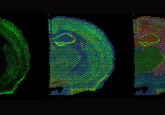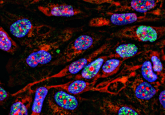Spatial biology: a collaboration between the biological sciences and information technologies

The first patent for spatial biology was filed in 2000 for a technique called Spatial Analysis of Genomic Activity (SAGA), which received a US patent in 2009. This technique dates back to the 1990s and the launch of the Visible Embryo Project (VEP) [1], which Mike Doyle (now the Vice President of Research at the New Mexico Institute of Mining and Technology, NM, USA) created and led for over 15 years. Here, Mike shares how the VEP led to the advent of spatial genomics and considers the computational advancements that were needed to manage the large datasets required for spatial...
To view this content, please register now for access
Join our member community for FREE to access a collection of journal and online-only features, including:
- Exclusive access to educational videos, eBooks and insights into top BioTechniques journal articles
- The latest news and journal updates delivered straight to your inbox when you want it
- Personalized recommendations for the latest member-exclusive podcasts, interviews and expert opinions
- Priority registration to webinars, panel discussions and events
- Access to competitions and journal publication discounts, including 10% off open access fees when you sign up today!





